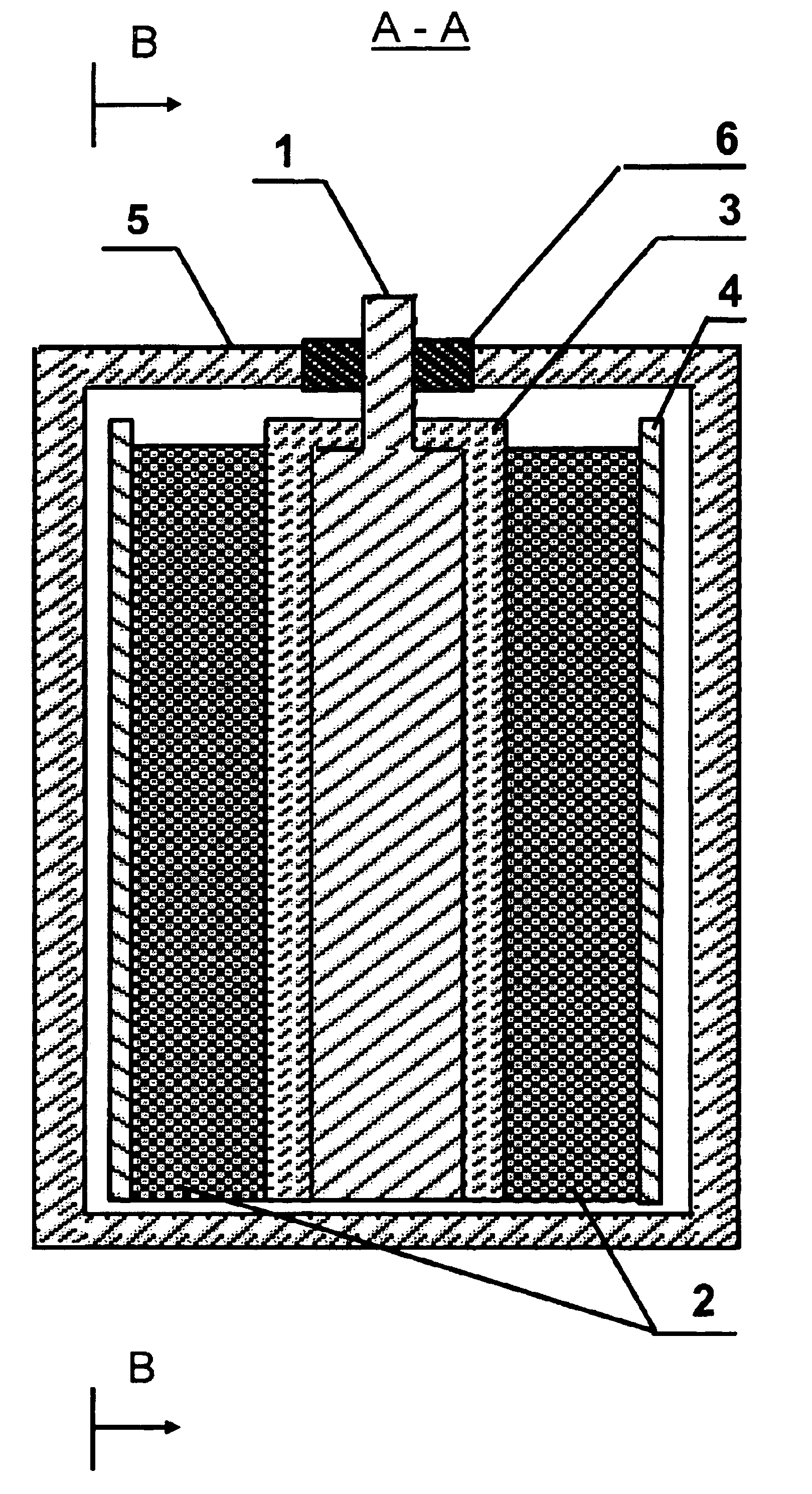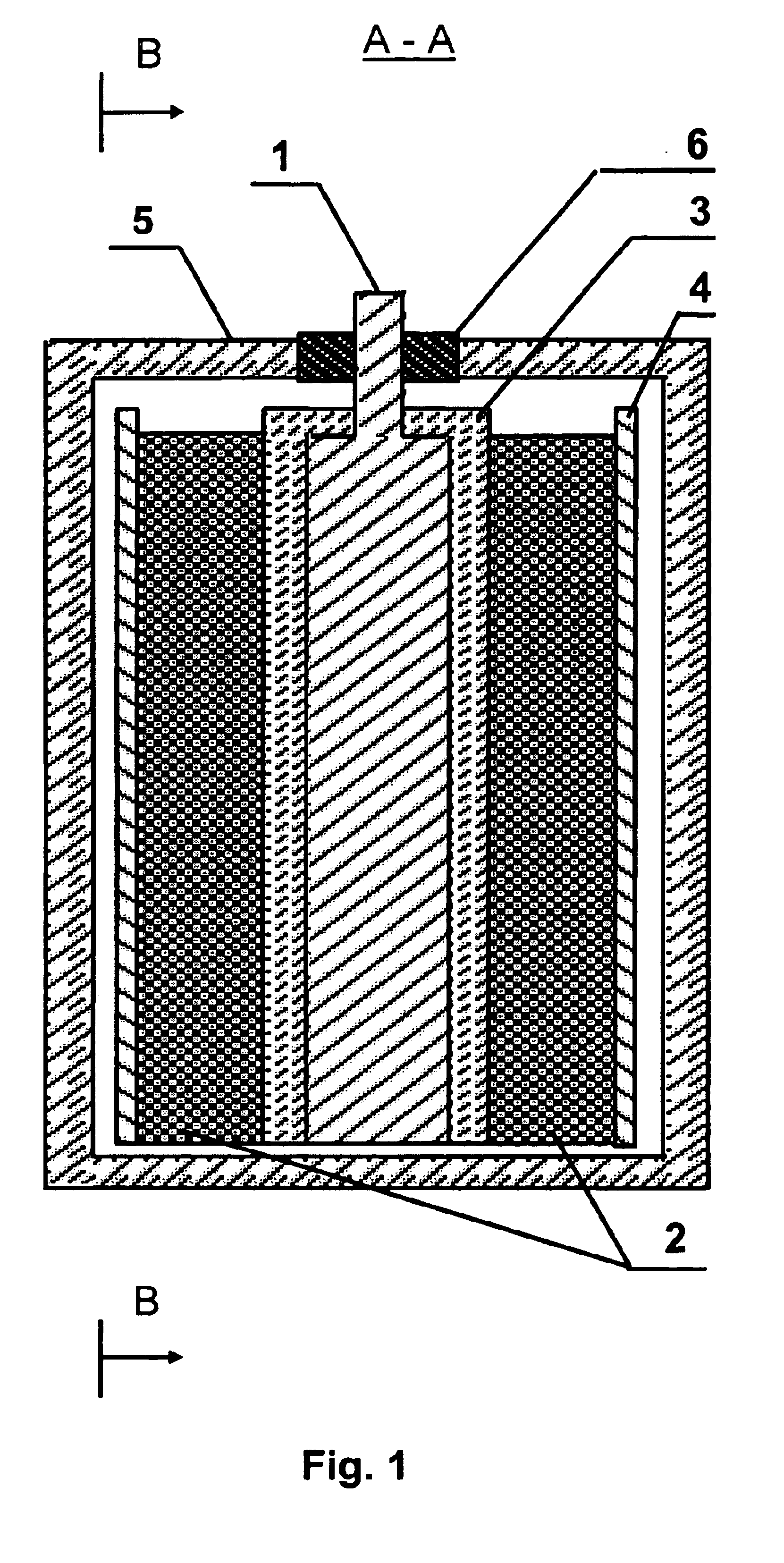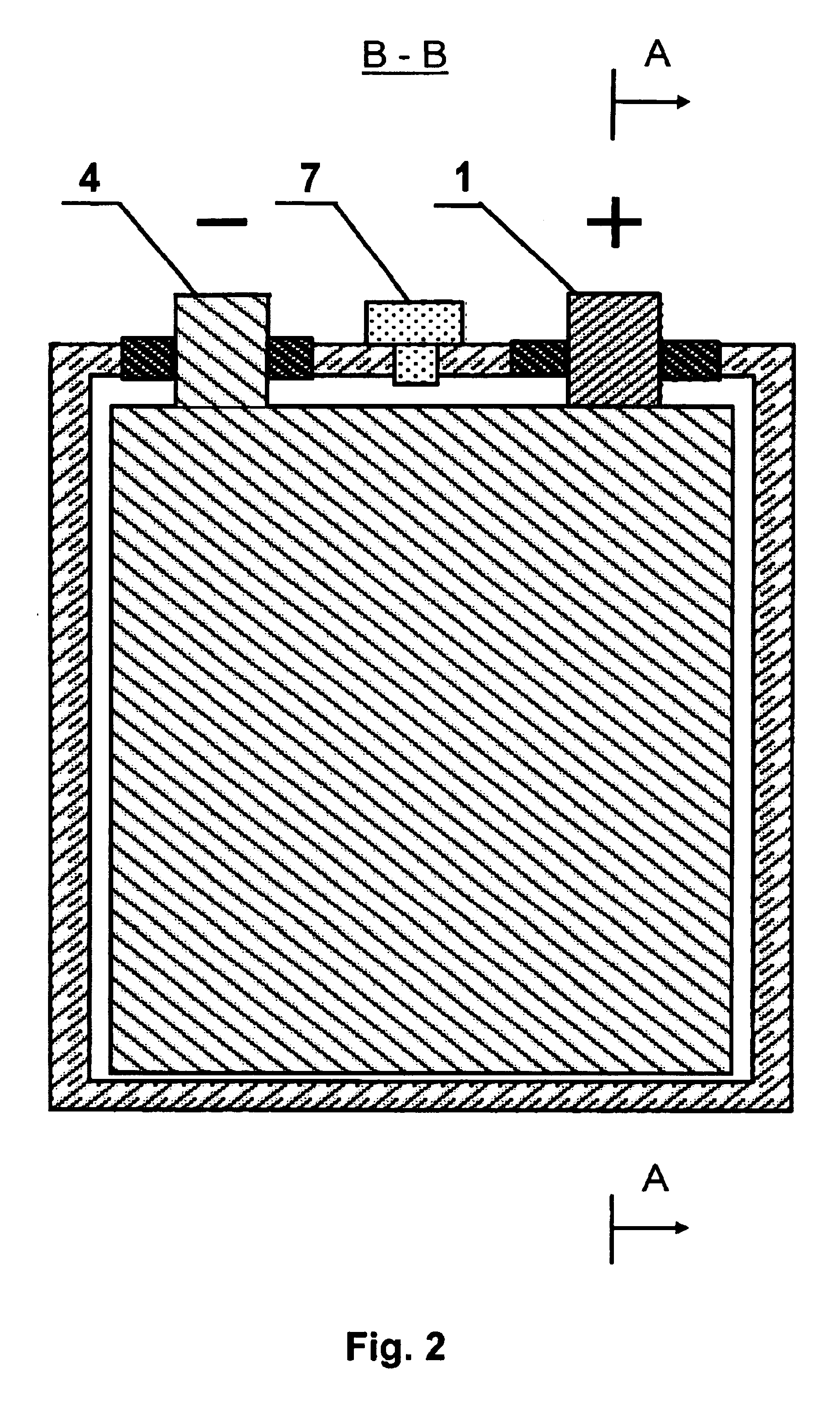Electrochemical capacitor with a double electric layer
a technology of electrochemical capacitors and capacitors, which is applied in the field of electrochemical capacitors having a double electric layer, can solve the problems of increasing the cost of widespread use, and achieve the effect of increasing the specific power characteristics and reducing the cost of electrochemical capacitors
- Summary
- Abstract
- Description
- Claims
- Application Information
AI Technical Summary
Benefits of technology
Problems solved by technology
Method used
Image
Examples
example 1
The capacitor has been made according to the structural diagram shown in FIG. 1.
An electrode made from material containing lead dioxide (PbO2) with mass 110 g and geometrical dimensions 140×80×1.6 mm3 was used as the positive (non-polarizable) electrode (1) in the capacitor.
A composite material (PaxCf1−x) from polyaniline and activated carbon fiber with whole mass 18 g and geometrical dimensions 140×80×1.2 mm3 was used as the negative (polarizable) electrode (2). The content of polyaniline in the negative electrode (2) was 10%. The specific electrical capacitance of the negative electrode (2) had a value 1200 F / g.
The negative electrode (2) with current taps (4) from lead alloy with mass 13 g and geometrical dimensions 140×80×0.1 mm3 comprises of two electrically connected parts. The negative electrode (2) (two its parts) is pressed to both surfaces of the positive electrode (1) which is placed in a pack of separator (3) having thickness 0.08 mm.
An aqueous solution of the sulfuric ac...
example 2
A capacitor had been manufactured with the geometrical parameters noted in Example 1. The negative electrode (2) was manufactured by means of introducing polypyrrole into the carbon-fiber fabric (PpxCf1−x) with subsequent electrochemical polymerization.
The polypyrrole content in the negative electrode (2) was 18%. The mass of the composite negative electrode (2) was 21 g. The specific capacitance of the negative electrode was 1050 F / g. The aqueous solution of the sulfuric acid with density 1.27 g / sm3 was used as the electrolyte.
The voltage VOC after the full charging of the present capacitor was equal to 2.09V. When discharging it by the 5 A direct current up to the voltage 0.8V, the charged capacitor yields 35,2 kj of energy. The mass and volume (without taking into account the housing mass) were equal, correspondingly, to 195 g and 46 sm3.
The internal ohmic resistance of this element changes slightly from the beginning to the end of discharging and, on the average, was 9.3-10−3 Oh...
example 3
In order to obtain a large discharge power the electrochemical capacitor with thin positive (1) and negative (2) electrodes had been manufactured.
The positive electrode (1) with the mass 17 g had geometrical parameters 140×80×0.4 mm3. The active mass of the negative electrode (2) with the mass 4.7 g comprised of two parts having dimensions 140×80×0.3 mm3, and it was manufactured by introducing 0.45 g of polyaniline into the matrix of carbon fiber with subsequent polymerization. The current tap (4) of the negative electrode had dimensions 140×80×0.1 mm3.
The process of assembling the capacitor was performed similar to one described in Example 1.
The capacitor mass (without taking into account the housing mass) was 65 g. An aqueous solution of the sulfuric acid with density 1.27 g / sm3 was used as electrolyte (6).
When discharging with the direct currents of 25 A, 60 A. and 100 A to the voltage of 0.8V the present capacitor yields, correspondingly, 6 kJ, 4.2 kJ, and 3.1 kJ of energy.
The a...
PUM
 Login to View More
Login to View More Abstract
Description
Claims
Application Information
 Login to View More
Login to View More - R&D
- Intellectual Property
- Life Sciences
- Materials
- Tech Scout
- Unparalleled Data Quality
- Higher Quality Content
- 60% Fewer Hallucinations
Browse by: Latest US Patents, China's latest patents, Technical Efficacy Thesaurus, Application Domain, Technology Topic, Popular Technical Reports.
© 2025 PatSnap. All rights reserved.Legal|Privacy policy|Modern Slavery Act Transparency Statement|Sitemap|About US| Contact US: help@patsnap.com



